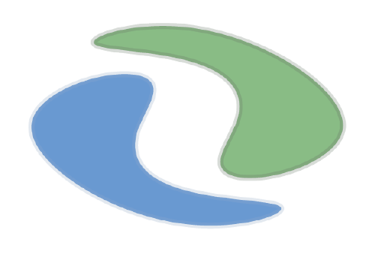Centella asiatica
Introduction
Centella asiatica, commonly known as Gotu Kola, Brahmi (in Ayurveda), or Indian Pennywort, is a perennial creeping herb native to wetlands and tropical regions of Asia. It has been used for thousands of years in Ayurvedic, Traditional Chinese, and Indonesian medicine for enhancing cognition, healing skin, and promoting longevity. Today, it is widely researched for its neuroprotective, anti-inflammatory, wound-healing, and anti-cancer potential.
Botanical Description
Centella asiatica is a small, low-growing, herbaceous plant with rounded, fan-shaped leaves featuring smooth edges. The leaves are borne on long petioles and arise from creeping stems that root at nodes. Tiny pale purple or white flowers grow in small clusters, eventually forming small ribbed fruits. The entire plant—leaves, stems, and roots—is used for medicinal purposes.
Geographical Distribution
Centella asiatica is commonly found in India, Sri Lanka, Nepal, Bhutan, Indonesia, China, Malaysia, and parts of Africa and Australia. It thrives in tropical and subtropical climates, particularly in moist, marshy areas near rice fields, riverbanks, and wetlands. Today, it is also cultivated in Madagascar, South Africa, and Southern United States for commercial and medicinal use.
Harvesting Time
The plant can be harvested year-round in tropical climates, although the highest concentration of bioactive compounds is found during late spring to early summer. Leaves are typically harvested 3–4 months after planting, while roots and whole plants are harvested after 6–7 months. For medicinal and commercial purposes, harvesting before flowering ensures optimal potency.
Phytochemistry
Centella asiatica contains triterpenoid saponins known as centelloids, which include:
Asiaticoside
Madecassoside
Asiatic acid
Madecassic acid
These compounds contribute to wound healing, collagen synthesis, neuroprotection, and anti-inflammatory activity.
Other constituents include flavonoids (quercetin, kaempferol), volatile oils, sterols, tannins, amino acids, and vitamins B, C, and carotenoids. These synergistic compounds make the plant valuable in dermatology, neurology, and herbal medicine.
Traditional Uses
In Ayurveda, Centella asiatica is classified as a “Medhya Rasayana” (brain tonic). It is traditionally used for improving memory, relieving anxiety, balancing the nervous system, and enhancing spiritual meditation.
In Traditional Chinese Medicine (TCM), it is known as Ji Xue Cao, used to treat fever, jaundice, urinary tract infections, and skin wounds.
In Indonesian and Thai folk medicine, it is consumed fresh in salads, teas, and juices to promote longevity and combat fatigue.
Medicinal Uses
Neuroprotective & Cognitive Enhancement: Enhances memory, improves neurotransmitter function, and protects neurons from oxidative stress—used in the management of Alzheimer’s, ADHD, and age-related cognitive decline.
Wound Healing & Dermatological Care: Asiaticoside promotes collagen synthesis, angiogenesis, and skin regeneration; used in creams for burns, scars, eczema, and stretch marks.
Anti-Inflammatory & Anti-Anxiety: Reduces cortisol levels, improves sleep, and calms the nervous system.
Venous Insufficiency & Varicose Veins: Strengthens blood vessels, improves microcirculation, and reduces swelling and leg heaviness.
Digestive Health: Supports gastric lining, reduces ulcers, and improves liver function.
Emerging Research – Anti-Cancer Potential
Recent studies have shown that Centella asiatica extracts, particularly asiatic acid and madecassoside, demonstrate anti-cancer properties by:
Inducing apoptosis (programmed cell death) in cancer cells.
Inhibiting proliferation of breast, liver, colorectal, and melanoma cancer cells.
Suppressing angiogenesis (formation of new blood vessels that feed tumors).
Research suggests asiatic acid modulates pathways like Bcl-2, caspase-3, and p53, which are crucial for cell-cycle regulation and apoptosis. More clinical trials are needed, but initial data indicate strong potential for integrative cancer therapy.
References
James, J.T., Dubery, I.A. "Pentacyclic Triterpenoids from Centella asiatica (L.) Urban." Molecules, 2009.
Brinkhaus B., et al. “Herbal Medicine for Memory and Cognitive Functions.” Journal of Ethnopharmacology (https://doi.org/10.1016/j.jep.2000.04.009)
Orhan, I.E. "Centella asiatica (Gotu Kola) and Its Triterpenes: Potential Drugs for the Treatment of Neurological Disorders." Planta Medica, 2012.
Bylka, W., et al. “Asiaticoside and Wound Healing.” Phytotherapy Research (https://doi.org/10.1002/ptr.1287)
Lee, J.H. et al. “Anti-Cancer Effect of Asiatic Acid on Breast Cancer Cells.” Cancer Cell International (https://cancerci.biomedcentral.com/articles/10.1186/1475-2867-12-14)


Medical Benefits
Usage
Stress / Anxiety / Mood
• Lowers cortisol, modulates HPA-axis
• May increase GABA and serotonin
• Clinical trials show reduced perceived stress and anxietyHormonal / Vitality Effects
• Increased testosterone and DHEA-S in overweight/aging malesAnti-Inflammatory / Antioxidant
• Reduces inflammatory markers (TNF-α, IL-6)
• Decreases oxidative stress (shown in animal & in vitro studies)Cognitive / Sleep Support
• Some studies report improved sleep quality, memory, and attentionMuscle Strength / Performance
• RCTs show increased strength and muscle gains when combined with resistance training
Standardized extract (20% bacosides):
• 300–450 mg/day (most common dose in clinical trials).
• Often taken in 2 divided doses with meals.
• Duration: benefits usually appear after 8–12 weeks of consistent use.Traditional Ayurvedic use (whole plant powder):
• 2–3 grams/day, usually taken with ghee, milk, or honey to improve absorption.


Memory and cognition:
• Bacopa monnieri (Brahmi) improves memory in healthy adults – systematic reviewNeuroprotective mechanisms:
• Bacopa monnieri and cognitive enhancement – antioxidant and cholinergic modulationMood and stress:
• Adaptogenic and anxiolytic activity of Bacopa monnieri in humans





